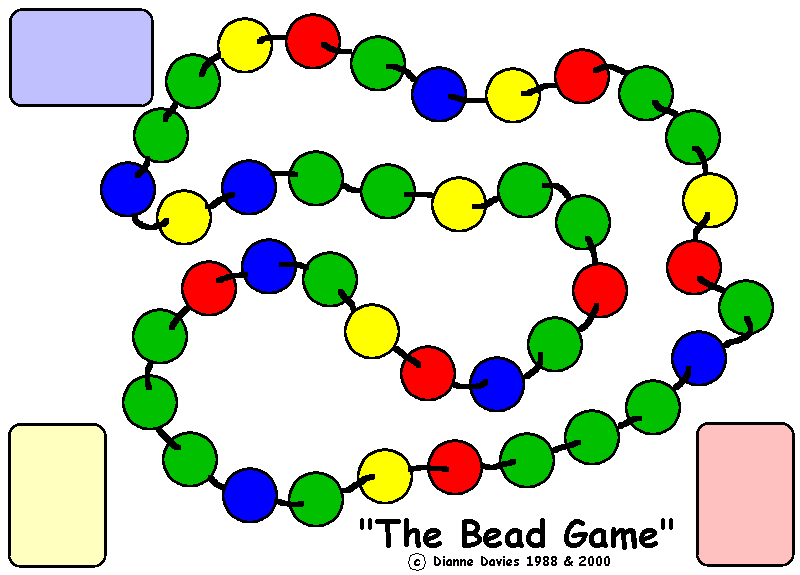
TEACHING OBJECTIVES :
Social conventions of game playing : turn-taking, rules, being a "good" loser
Specific literacy or number targets
Planning ahead
YOU WILL NEED: printout of game board (laminating will add to the durability of the board and cards.)
3 sets of cards (red/blue/yellow card or marked with red/blue/yellow) the same size as the rectangles on the board; words, phrases, questions etc. on the cards to suit targets for lesson - NLS high-frequency words, phonic rules being taught, specialised vocabulary, number targets, subject questions etc.
Die (numbers or dots) and counters
RULES OF PLAY :
Place cards on appropriate colour rectangles
Players each need a different colour counter.
Start by placing counter anywhere on board.
Direction of movement does not matter, but only one direction per move.
Throw die and move along the appropriate number of "beads"
If counter lands on red, blue, or yellow bead, pick up card of that colour - read word, do sum, answer question etc. - if correct, player keeps card, if incorrect, card is returned to bottom of pile.
If counter lands on green bead, do nothing.
If a six is thrown, have another throw (count out original six first and pick up any relevant card.)
Two counters cannot share the same space, but they can "hop over" another - if a throw of the die would result in a counter landing on another, the player must move in the opposite direction; if this would also result in two counters occupying the same space, then the move is forfeited and the counter remains where it was.
Forward planning is allowed - check to see which direction would give the best result (i.e. land on a red/yellow/blue bead.)
Play continues for a predetermined length of time or until all the cards have been won - the board has no "start" and no "finish." When the time is up, players count up cards won and the one with the most cards is declared the winner.
BACK

